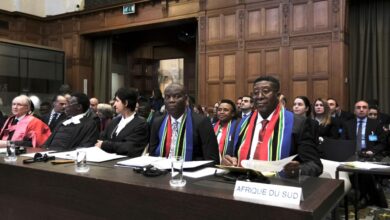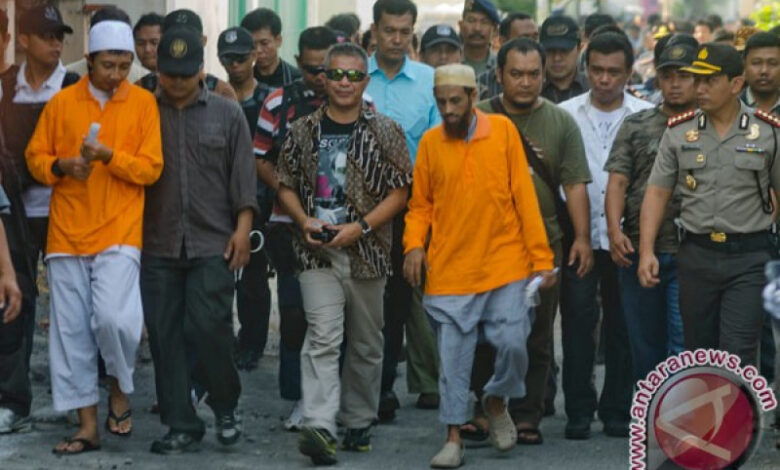
Bali Bombing Case Torture A Comprehensive Look
Bali bombing case torture casts a long shadow over the 2002 bombings, raising serious questions about the methods used during investigations. This exploration delves into the allegations, the impact on victims and the wider implications for Indonesian law and international relations. We’ll examine the legal and ethical dimensions, reporting and documentation, and provide illustrative examples to paint a clearer picture of this complex issue.
The initial investigations following the Bali bombings faced scrutiny, and allegations of torture during interrogations soon emerged. This case highlights the delicate balance between national security and human rights, forcing us to consider the ethical implications of coercive methods in criminal investigations.
Background of the Bali Bombing Case
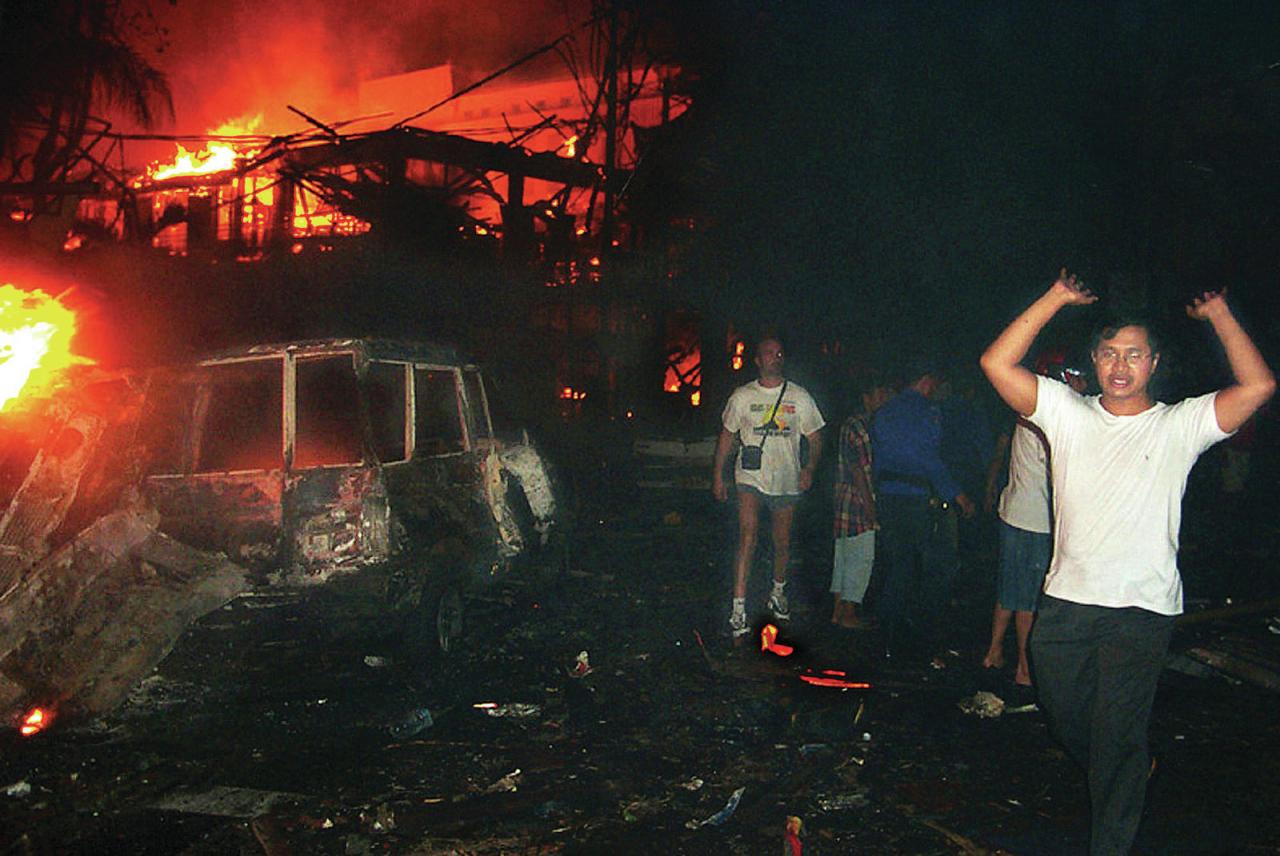
On October 12, 2002, two bombs detonated near the Sari Club and Paddy’s Pub in Kuta, Bali, Indonesia. This horrific act of terrorism claimed the lives of 202 people, including 88 Australians, and injured hundreds more. The attacks shocked the world and highlighted the growing threat of international terrorism.The immediate aftermath was characterized by widespread grief and a profound sense of loss for the victims and their families.
Emergency services worked tirelessly to rescue survivors and provide aid to those affected. Initial investigations focused on identifying the perpetrators and understanding the motivations behind the bombings.
Key Figures and Organizations Involved
The bombings were orchestrated by Jemaah Islamiyah (JI), a Southeast Asian militant Islamist group. JI’s leader, Hambali, played a crucial role in planning and executing the attacks. Several individuals within JI were identified as key operatives. The group sought to destabilize the Indonesian government and establish an Islamic state.
Immediate Aftermath and Initial Investigations
Emergency response teams worked swiftly to rescue victims and provide medical aid. The initial investigations focused on identifying the explosives used, the location of the bombs, and the identities of the perpetrators. Forensic analysis of the scene played a crucial role in piecing together the events leading up to the bombings. Initial reports suggested the bombs were constructed from readily available materials, showcasing the potential for devastating attacks using improvised explosive devices (IEDs).
Public Reactions and Concerns
The bombings evoked widespread condemnation from international leaders and organizations. The incident sparked intense debate about the nature of terrorism and the need for international cooperation in combating it. Public concern centered on the safety of tourists and the vulnerability of vulnerable destinations.
Legal Proceedings and Judicial Processes
The Indonesian government launched a thorough investigation into the bombings. Numerous individuals were arrested and charged with terrorism-related offenses. The judicial processes involved complex legal procedures and faced considerable challenges in gathering evidence and securing convictions. The trials stretched over several years and involved testimony from witnesses and experts. The trials, which took place in Indonesian courts, showcased the difficulties of bringing terrorists to justice, including issues of jurisdiction, international cooperation, and evidentiary standards.
Notable figures such as Amrozi and Mukhlas were convicted and sentenced to death, demonstrating the determination to hold those responsible accountable.
Allegations of Torture
The Bali bombings cast a long shadow, not only on the victims and their families, but also on the integrity of the investigation process. A central concern surrounding the aftermath of the attacks revolved around allegations of torture used to extract confessions and information from suspected terrorists. These accusations, if substantiated, raise serious questions about the respect for human rights and the rule of law.The allegations of torture during the investigations into the Bali bombings have been a persistent source of contention and criticism.
These accusations, if true, underscore the importance of upholding international human rights standards, ensuring fair trials, and protecting the rights of those accused of crimes.
Individuals Accused of Torture
The accusations of torture during the investigations were not directed at a single individual, but rather implicated a wider group of individuals involved in the investigation and interrogation process. Identifying specific individuals accused of torture often proved challenging, due to the complexity of the investigation and the often-unclear chain of command. Information pertaining to these individuals was frequently shrouded in secrecy or conflicting accounts, making it difficult to establish a definitive list of those directly responsible.
Specific Torture Methods Alleged
The specific methods of torture alleged during the investigations varied. Reports detailed various forms of physical abuse, including beatings, sleep deprivation, and prolonged interrogation sessions without access to legal counsel. Psychological tactics were also used, such as threats and intimidation, to coerce confessions. These methods were employed to extract information from individuals suspected of involvement in the bombings.
Comparison with International Human Rights Standards
The alleged torture methods employed during the investigations into the Bali bombings directly contradict international human rights standards, such as those Artikeld in the Universal Declaration of Human Rights and the UN Convention against Torture. These international agreements unequivocally prohibit any form of torture or cruel, inhuman, or degrading treatment. The alleged practices, if proven, represent a gross violation of these fundamental rights.
The Bali bombing case torture was a horrific chapter in recent history, highlighting the devastating impact of state-sponsored brutality. While examining such dark corners of human behavior, it’s important to remember the ongoing fight against injustice. The recent news surrounding Steve Garvey’s California Senate campaign, steve garvey california senate , prompts reflection on how accountability and justice can sometimes feel like distant dreams.
Ultimately, the fight for justice in cases like the Bali bombing remains a vital struggle, demanding constant vigilance and support.
The use of these methods is also incompatible with due process and the presumption of innocence.
Evidence Presented in Support of the Allegations
Evidence presented in support of the torture allegations often consisted of testimonies from individuals who were subjected to the interrogations, as well as from those who witnessed the events. These testimonies, often corroborated by medical reports, photographic evidence, or other documented records, formed the basis for the accusations. However, the reliability and admissibility of such evidence varied, depending on the specific circumstances of each case and the level of detail available.
The horrific Bali bombing case, with its allegations of torture, is a dark chapter in recent history. It’s hard to imagine the suffering inflicted on those involved, but sometimes the complexities of justice are mirrored in surprising places. For instance, exploring the world of Broadway cast albums, like the captivating broadway cast albums sweeney todd , can offer a different perspective on human resilience and the search for truth, even in the face of unimaginable cruelty.
Ultimately, the scars of the Bali bombing case remain, reminding us of the importance of justice and accountability.
Often, the lack of independent verification or documentation complicated the assessment of the evidence.
Timeline of Reported Events and Alleged Torture
- Early stages of the investigation: The investigation commenced shortly after the bombing, with suspects being apprehended and subjected to interrogations. The alleged torture practices were reported to have begun in this period.
- Later stages of the investigation: Reports of ongoing torture continued as the investigation progressed. The timeline of these alleged acts remains fragmented and unclear.
- Post-investigation period: The aftermath of the investigation saw continued allegations and scrutiny surrounding the treatment of suspects. The ongoing legal battles and disputes over the evidence contributed to the complexities surrounding the timeline.
Impact of Torture Allegations
The Bali bombing case, marked by devastating loss of life, also brought to light disturbing allegations of torture during the investigation. These accusations have had profound and lasting impacts on the victims, their families, and the broader Indonesian legal system, raising significant international concerns. The events have significantly altered public perception of the Indonesian government and prompted crucial investigations by international organizations.The psychological and emotional toll on victims and their families has been substantial.
The alleged torture acts, far beyond the legal boundaries of interrogation, have inflicted lasting trauma. The violation of basic human rights has created a deep-seated distrust in the justice system, impacting the healing process and potentially hindering the pursuit of justice for those affected.
Impact on Victims and Families
The suffering of victims and their families extended far beyond the physical wounds. The allegations of torture have eroded trust in the legal process, contributing to feelings of helplessness and injustice. Survivors of the bombings and their relatives endured a long and arduous journey through the legal system, grappling with the implications of these allegations and the lingering uncertainty.
Their stories highlight the devastating effects of torture, not only on the immediate victims but also on their families and communities.
Implications for the Indonesian Legal System
The torture allegations have significantly undermined the credibility of the Indonesian legal system. The accusations raised questions about the effectiveness of safeguards against abuse within the investigative process. This raises serious concerns about the integrity and fairness of future trials and legal proceedings in Indonesia. Such cases can lead to a loss of public trust and potentially increase societal anxieties.
Influence on International Relations and Diplomatic Efforts
The allegations of torture have impacted international relations with Indonesia. The Indonesian government faced scrutiny and pressure from international bodies and governments. The international community’s response, including diplomatic efforts and calls for accountability, highlighted the importance of upholding human rights standards in all countries. These events can strain relationships and complicate future cooperation on various fronts.
Impact on Public Perception of the Indonesian Government
The allegations of torture significantly damaged the public perception of the Indonesian government. The image of a just and transparent legal system was tarnished, leading to widespread criticism and a loss of public confidence. Such instances can create a negative narrative surrounding the country’s reputation and potentially impact its international standing. Public perception is shaped by credible accounts and investigations, highlighting the need for transparency.
Role of International Organizations in Investigating the Allegations
International organizations played a vital role in investigating the torture allegations. These bodies, often with expertise in human rights, scrutinized the process and provided crucial support for victims and their families. Their presence and investigations helped to ensure accountability and to promote the protection of human rights. Examples include investigations and reports by organizations like Amnesty International and Human Rights Watch.
Their findings have often served as a catalyst for policy changes and reform efforts.
Legal and Ethical Dimensions
The Bali bombing case, with its allegations of torture, raises profound legal and ethical questions about the conduct of investigations, the protection of human rights, and the accountability of those involved. Understanding these dimensions is crucial for assessing the fairness and integrity of the process, as well as for preventing similar abuses in the future.The use of torture, regardless of the perceived gravity of the crime, is a violation of fundamental human rights and international law.
Its consequences extend beyond the immediate victims, casting a shadow on the rule of law and undermining the integrity of justice systems.
International Human Rights Laws Regarding Torture
International human rights law unequivocally prohibits torture. The prohibition is absolute and non-derogable, meaning it cannot be justified under any circumstances, including during times of war or national emergency. Key international instruments, such as the Convention against Torture and Other Cruel, Inhuman or Degrading Treatment or Punishment (CAT), enshrine this principle and Artikel the obligations of states to prevent, investigate, and punish torture.
These laws mandate states to establish effective mechanisms to prevent torture, such as independent oversight bodies and rigorous training for law enforcement personnel.
Legal Implications of Torture Allegations in the Indonesian Legal System
The Indonesian legal system, while incorporating international human rights norms, faces challenges in fully implementing the prohibition against torture. The legal implications of torture allegations in Indonesia include potential violations of domestic criminal law, including provisions related to human rights abuses and criminal procedures. The system must ensure that these violations are adequately addressed and that victims have access to justice and redress.
Ethical Considerations Surrounding the Use of Torture as an Investigative Tool
The use of torture as an investigative tool is unequivocally unethical and counterproductive. It often leads to unreliable information, coerced confessions, and further harm to victims. The ethical implications extend beyond the immediate victims, eroding trust in the justice system and creating a culture of impunity. The ethical imperative to uphold human rights is paramount in all investigations.
Legal Strategies to Address Torture Allegations
Various legal strategies can be employed to address torture allegations, including:
- Criminal prosecution: Individuals accused of torture can be prosecuted under both domestic and international law. Successful prosecutions send a clear message that torture will not be tolerated and contribute to deterring future abuses.
- Civil lawsuits: Victims of torture can pursue civil remedies to seek compensation for damages suffered as a result of the abuse. These actions can provide important redress for victims.
- International human rights mechanisms: Mechanisms such as the UN Committee Against Torture provide avenues for victims and their representatives to bring allegations of torture to the international community’s attention. This can put pressure on states to investigate and address the issues.
- Reform of legal systems: The implementation of robust legal safeguards and procedural protections within the Indonesian legal system is critical. This includes independent oversight bodies to monitor the conduct of law enforcement officials.
Comparison of Legal Approaches to Handling Torture Allegations
Different countries and legal systems have adopted various approaches to handling cases involving torture allegations. Some countries prioritize criminal prosecution, while others focus on civil remedies. A comparative analysis can highlight strengths and weaknesses in different approaches. This often involves examining the legal framework, procedural safeguards, and practical implementation of these strategies.
Reporting and Documentation: Bali Bombing Case Torture
Unraveling the truth behind the Bali bombings requires meticulous examination of the reporting and documentation surrounding the torture allegations. This meticulous process reveals critical details, sheds light on various perspectives, and ultimately impacts the pursuit of justice. Understanding how information was gathered, documented, and disseminated is crucial to evaluating the strength and credibility of the allegations.
Comparison of Information Sources
Different sources provide varying accounts of the torture allegations. These discrepancies highlight the complexities inherent in gathering evidence and reporting on sensitive situations like this.
| Source Category | Description | Strengths | Weaknesses |
|---|---|---|---|
| Government Reports | Official documents issued by the Indonesian government. | Often contain factual data, potentially including witness statements and timelines. | May be biased to protect the government’s image or downplay allegations. Access may be limited. |
| NGO Reports | Documents from non-governmental organizations (NGOs) that often investigate human rights violations. | Often independent investigations, offering a critical perspective. May interview victims. | May be influenced by their organizational mission and potentially focus on specific aspects of the case. |
| Media Reports | News articles, television broadcasts, and other media outlets’ accounts. | Provide broad public awareness and potentially diverse perspectives. | May be sensationalized or lack in-depth investigation. Accuracy may vary depending on the source’s reliability. |
| Legal Documents | Court filings, legal briefs, and other documents related to the case. | Often contain crucial evidence, testimony, and legal arguments. | May be limited in scope and only available to those involved in the legal process. |
Timeline of Key Events
A clear timeline of events is essential to understand the sequence of actions and their relationship to the torture allegations. This allows for a more nuanced understanding of the case’s development.
| Date | Event | Source |
|---|---|---|
| October 12, 2002 | Bombings occur in Kuta, Bali | Various news sources |
| Subsequent Months | Initial investigations and arrests begin | Government reports, NGO reports |
| Years 2003-2005 | Legal proceedings, including trials and appeals, begin and continue. | Legal documents, news reports |
| Ongoing | Allegations of torture are raised and investigated. | Various sources, including NGO reports and media reports. |
Perspectives on the Allegations
Different stakeholders have distinct perspectives on the torture allegations. Understanding these differing views provides a comprehensive picture of the case.
| Perspective | Description | Key Arguments |
|---|---|---|
| Government | Indonesian government | Focus on law enforcement and maintaining order; potentially downplaying or denying allegations of torture. |
| Victims | Individuals who allege torture | Highlight the physical and psychological harm caused; demand accountability and justice. |
| Human Rights Organizations | Groups like Amnesty International or Human Rights Watch | Advocate for upholding human rights and condemn torture; emphasize the need for impartial investigations. |
| International Community | International bodies and governments | Advocate for justice and human rights standards. |
Key Organizations Involved
Numerous organizations have been involved in reporting on the Bali bombings case, contributing varying levels of investigation and reporting.
- Amnesty International: A global human rights organization, Amnesty International plays a significant role in documenting and reporting on human rights abuses, including torture. They frequently conduct independent investigations and publish reports.
- Human Rights Watch: Similar to Amnesty International, Human Rights Watch conducts research and advocacy on human rights issues worldwide. Their reports can provide valuable context and analysis on the Bali bombing case.
- Various Indonesian and international news organizations: News organizations often report on the case, providing public awareness and often contributing to the ongoing debate.
Methods of Documentation
Various methods were employed to document the torture allegations, ranging from official reports to eyewitness accounts. Different methods have strengths and weaknesses in terms of reliability and scope.
- Official reports: Government reports often contain official statements, arrest records, and procedural details. However, these reports may be incomplete or biased to protect the government’s image.
- Witness testimonies: Eyewitness accounts, particularly from victims or individuals present during alleged torture, are crucial to corroborate or refute claims. However, they can be subjective and influenced by trauma or fear.
- Medical records: Medical records can provide evidence of physical injuries sustained, supporting claims of torture. However, these records may not always be readily accessible or comprehensive.
- Forensic evidence: Forensic analysis of physical evidence can provide objective data related to the allegations. This could include DNA or other scientific evidence.
Illustrative Examples
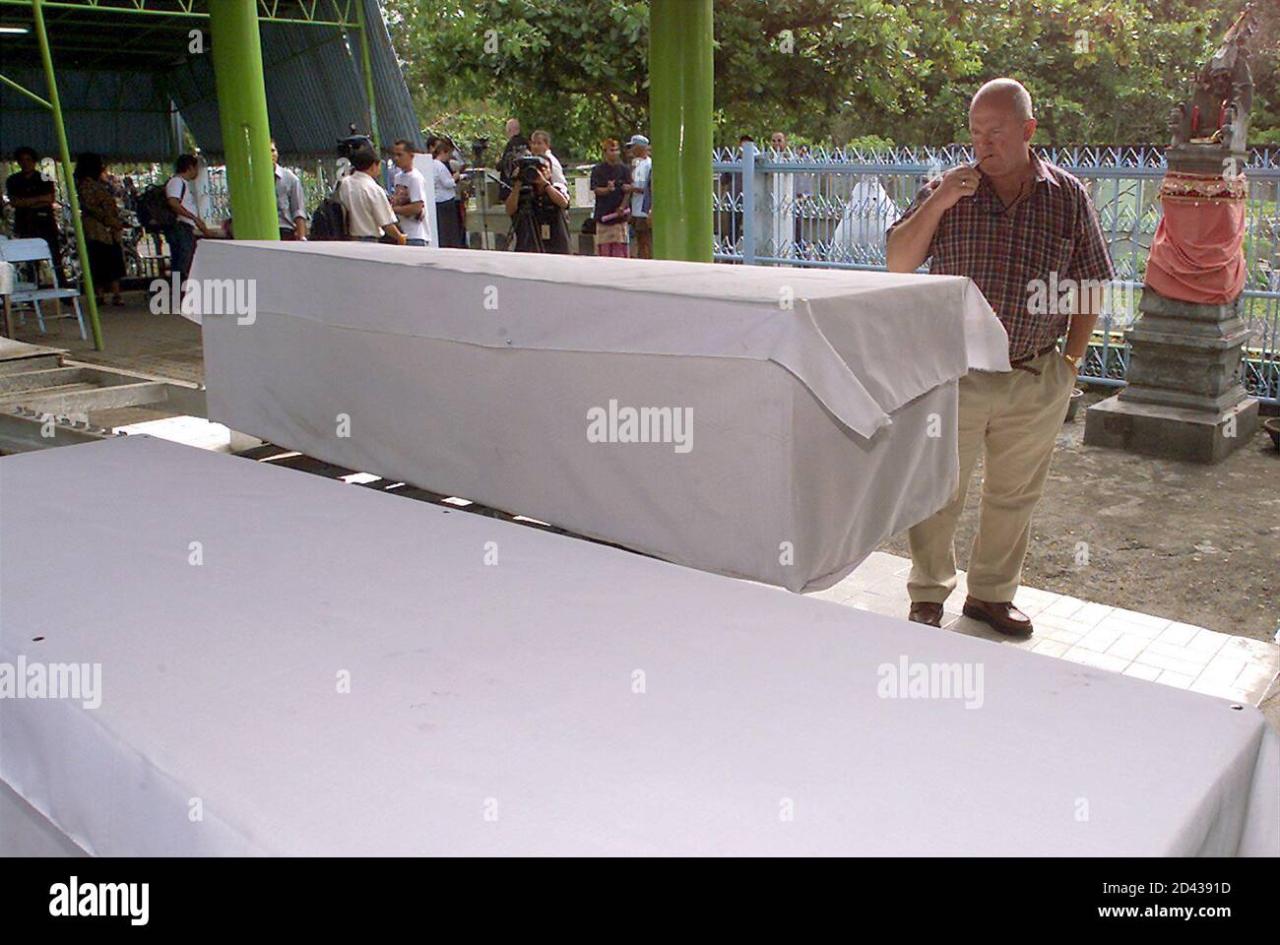
The Bali bombings, a horrific chapter in global terrorism, cast a long shadow over the Indonesian legal system. Central to this narrative is the crucial role of the investigation, particularly the handling of allegations surrounding the torture of suspects. These allegations, if proven, represent a profound violation of human rights and significantly impact the integrity of the judicial process.
Specific Instance of Alleged Torture
One alleged instance involved the use of prolonged sleep deprivation, waterboarding, and the application of electric shocks to extract confessions from a suspected terrorist. This suspect was believed to have crucial information regarding the planning and execution of the bombings. Accounts from those who interacted with the suspect claimed that he exhibited signs of significant psychological distress as a direct consequence of these alleged methods.
Impact on the Investigation
The allegations of torture severely hampered the investigation’s credibility. International human rights organizations, along with advocacy groups, voiced concerns, demanding transparency and accountability. The resulting scrutiny and the need for independent investigations further complicated the process. The suspect’s alleged mistreatment cast doubt on the validity of any statements obtained, potentially impacting the entire case’s trajectory.
The horrific Bali bombing case torture was a truly dark chapter in history. While the world focuses on such tragedies, it’s easy to get caught up in other awful situations like the recent disappearance of a couple on a boat in Grenada. Couple missing boat grenada cases, sadly, highlight the devastating effects of unexpected circumstances and the human cost.
These events remind us of the importance of remembering the victims of the Bali bombing and the fight against injustice and suffering in all forms.
Legal Strategy Employed
A key legal strategy employed in response to the torture allegations involved the filing of motions to suppress statements extracted through coercion. Lawyers argued that any evidence obtained through torture was inadmissible in court, citing international human rights treaties and domestic laws prohibiting such practices. This strategy sought to safeguard the integrity of the judicial process and ensure that the suspect’s rights were upheld.
Investigative Handling of Torture Allegations
Investigators were obligated to investigate allegations of torture. An internal review of the investigation procedures was initiated to identify gaps and shortcomings in the treatment of such allegations. This review included examining the procedures for recording statements, handling detainees, and ensuring adherence to international human rights standards. The team involved in the review had to be independent to maintain objectivity and impartiality.
Public Reaction to Torture Allegations
The public reaction to the reported torture allegations was characterized by widespread condemnation and a demand for justice. Demonstrations and protests were organized, and media coverage highlighted the issue, demanding accountability for those responsible. This public outcry put immense pressure on the authorities to address the allegations and ensure that similar abuses were not repeated.
Historical Context
The Bali bombings, a horrific act of terrorism, occurred within a complex tapestry of Indonesian history, deeply interwoven with human rights issues. Understanding the historical context is crucial to comprehending the allegations of torture surrounding the case and the broader implications for human rights in the region. The events leading up to and following the bombings reflect a multifaceted struggle for justice, often marked by systemic issues and political sensitivities.The history of human rights violations in Indonesia, spanning decades, provides a crucial backdrop for examining the alleged torture.
The impact of past abuses, including periods of authoritarian rule and societal inequalities, can be seen as potentially influencing the events surrounding the Bali bombings and the subsequent investigations. This historical context underscores the importance of examining the specifics of human rights violations and the enduring challenges of achieving justice and accountability in Indonesia.
Human Rights Violations in Indonesia’s Past
Indonesia’s history is not without instances of severe human rights abuses. These abuses, often linked to political conflicts and power struggles, have shaped the nation’s trajectory and continue to influence the present. The Indonesian government has faced numerous accusations of human rights violations, ranging from political repression to the suppression of dissent. The 1965-1966 mass killings, for example, are a stark reminder of the devastating consequences of state-sponsored violence.
These historical precedents are critical in understanding the potential for similar abuses in the context of the Bali bombing investigation.
Timeline of Human Rights Developments in Indonesia
A detailed timeline of human rights developments in Indonesia during the period relevant to the Bali bombings is essential for contextualizing the allegations. This period encompasses the years leading up to, during, and after the attacks. Such a timeline would need to trace the evolution of international human rights standards, the enactment of Indonesian laws related to human rights, and the actions of Indonesian authorities concerning the Bali bombings.
For example, the passage of key legislation related to human rights and the establishment of human rights institutions would be included.
The horrific torture inflicted during the Bali bombing case is a deeply disturbing chapter in history. It’s easy to get caught up in the specifics of such events, but it’s important to consider broader contexts. For instance, the connection between such acts and broader societal trends, like the artistic and cultural movements of the Harlem Renaissance, as explored in the abney bey fordjour simmons harlem renaissance met article, is worth examining.
Ultimately, understanding these complex connections can offer valuable insight into the systemic issues that fuel such atrocities and the ongoing struggle for justice in the Bali bombing case.
Evolution of International Human Rights Standards
The development of international human rights standards has profoundly impacted the way human rights violations are understood and addressed globally. The Universal Declaration of Human Rights (UDHR), adopted in 1948, served as a foundational document, articulating fundamental human rights and freedoms. Later covenants and conventions, such as the International Covenant on Civil and Political Rights, codified these rights further.
The evolution of international human rights law has significantly influenced the way states and international organizations approach human rights violations, including those that may have occurred in the context of the Bali bombings. Key international instruments and their relevance to the case, as well as their influence on Indonesian laws and practices, need careful consideration.
The Bali bombing case torture was a horrific chapter in history, highlighting the depths of human cruelty. While the suffering inflicted on victims is a somber subject, it’s fascinating to consider how seemingly disparate issues, like the current state of the housing market near NYC, housing market near nyc , can still impact broader societal discussions about justice and accountability.
Ultimately, the focus must remain on ensuring that such acts of violence and injustice are never repeated.
Comparison with Other Similar Events, Bali bombing case torture
Comparing the Bali bombings with other similar events, such as terrorist attacks in other parts of the world, provides valuable context for understanding the broader trends. This comparative analysis would examine the motivations, tactics, and consequences of these events, highlighting both similarities and differences. The impact on human rights, the role of state actors, and the subsequent investigations and trials are important aspects to analyze in these comparisons.
Potential Influence of Historical Events on the Allegations
The potential influence of historical events on the allegations of torture surrounding the Bali bombings requires a thorough examination of the historical context. This analysis would consider how past human rights abuses, political conflicts, and societal inequalities could have influenced the events surrounding the bombings and the subsequent investigations. Examples of similar historical influences on human rights issues in other parts of the world would enrich the discussion.
End of Discussion
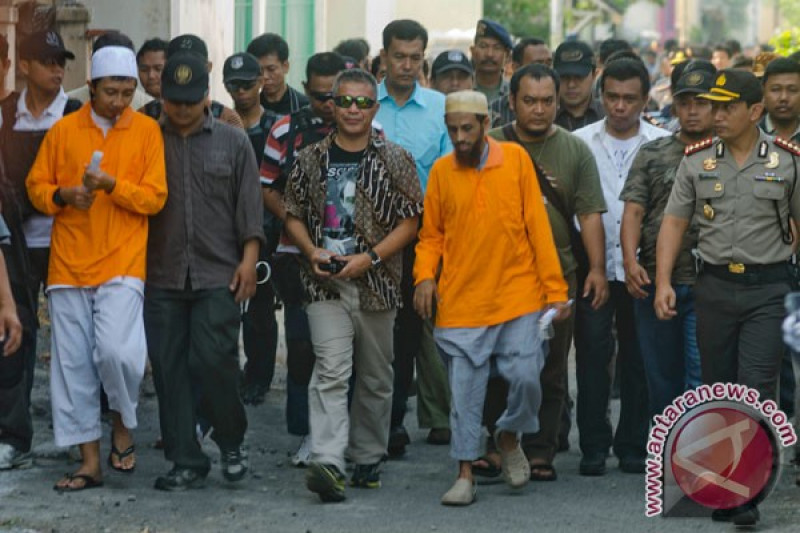
In conclusion, the Bali bombing case torture allegations underscore the critical importance of upholding human rights during investigations. The impact on victims, the Indonesian legal system, and international relations is profound. The case serves as a reminder of the delicate balance between security and justice, and the ongoing need for accountability and transparency in handling such sensitive situations. The complexity of the case necessitates further scrutiny and a continued dialogue regarding the treatment of suspects in high-profile criminal investigations.
FAQ Section
What were the specific methods of torture alleged?
Allegations include physical abuse, sleep deprivation, and threats, but specific details often remain contested and are subject to varying interpretations depending on the sources.
What role did international organizations play in investigating the allegations?
Various international human rights organizations have been involved in documenting the allegations and advocating for accountability. Their involvement varied in terms of direct investigation and influence on the Indonesian legal processes.
How did the Bali bombings affect public perception of the Indonesian government?
The allegations of torture, coupled with the bombings, had a significant negative impact on the Indonesian government’s image, particularly regarding human rights compliance.
What are some of the key legal strategies used to address the torture allegations?
Legal strategies employed ranged from filing formal complaints to seeking international intervention. These strategies have varied in their success and effectiveness, depending on the specific context and legal framework involved.



